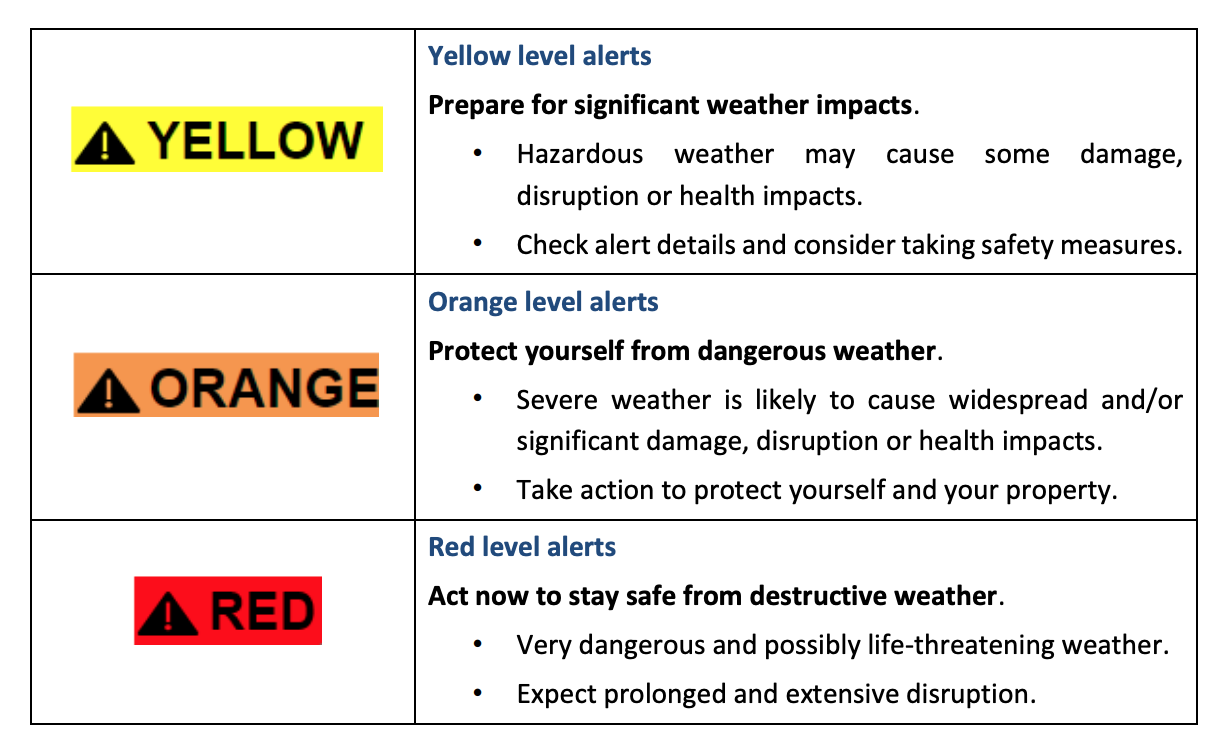⚠️ BIG CHANGES to Environment Canada’s Alerts Beginning Today
/Environment Canada is making big changes to the way it issues weather alerts, in an attempt to make them easier to understand at a glance.
Starting today, Wednesday, November 26th, 2025, the new system will use Yellow, Orange or Red colours for all 'Advisories', 'Watches' and 'Warnings'.
'Statements' will remain unchanged (blue or grey), for now.
Environment Canada is making this change to hopefully help you quickly gauge both the severity of a weather event and the level of confidence forecasters have in their predictions.
Shown in the chart above, Environment Canada forecasters will choose the colour of alerts based on an "Impact" level and a "Confidence" level.
Here’s a breakdown of the upcoming changes and what they mean for you.
Headline Changes
Currently, weather alert headlines look like this:
Heat Warning
Under the new system, the headline will include a colour code that signals risk. For example:
Yellow Level Warning – Heat
We at Instant Weather feel that something about "Yellow Level Warning – Heat Issued" looks… strange and extra confusing.
Therefore, when we post Environment Canada alerts to social media, send notifications via our free app, and send out text message alerts, we're going to format it like this:
Heat Warning (Yellow Level) Issued
We believe this will make the transition from the old format to the new format easier for our community members. However, we'd love to hear your feedback on this so please let us know what you think about it!
New Colours
For the first time, advisories, watches and warnings will come in one of three colour options:
- Yellow = low risk (stay alert)
- Orange = moderate risk (take precautions)
- Red = high risk (serious danger)
Impact Level
The new Impact Level will estimate how much damage or disruption a storm is likely to cause.
Possible values:
- Low
- Moderate
- High
- Extreme
For example, a minor snowfall could be flagged as low impact, while a hurricane might carry an extreme impact designation.
Confidence Level
The new Confidence Level should help clarify how confident the Environment Canada forecaster issuing the alert feels.
Possible values:
- Low
- Moderate
- High
- Very High
For example, a “very high confidence” alert means there's near zero question if the storm poses a threat to the alerted area, while a “low confidence” could suggest that path may shift direction or the storm could dissipate.
Why These Changes Matter
Environment Canada believes these updates make weather alerts more actionable and accessible. Instead of vague warnings, you’ll know:
- The severity of the threat (colour level).
- The expected damage (impact level).
- The certainty of the forecast (confidence level).
For further details on these alert changes, visit Environment Canada’s newly launched website regarding colour-coded alerts:
https://www.canada.ca/en/services/environment/weather/severeweather/weather-alerts/colour-coded-alerts.html








